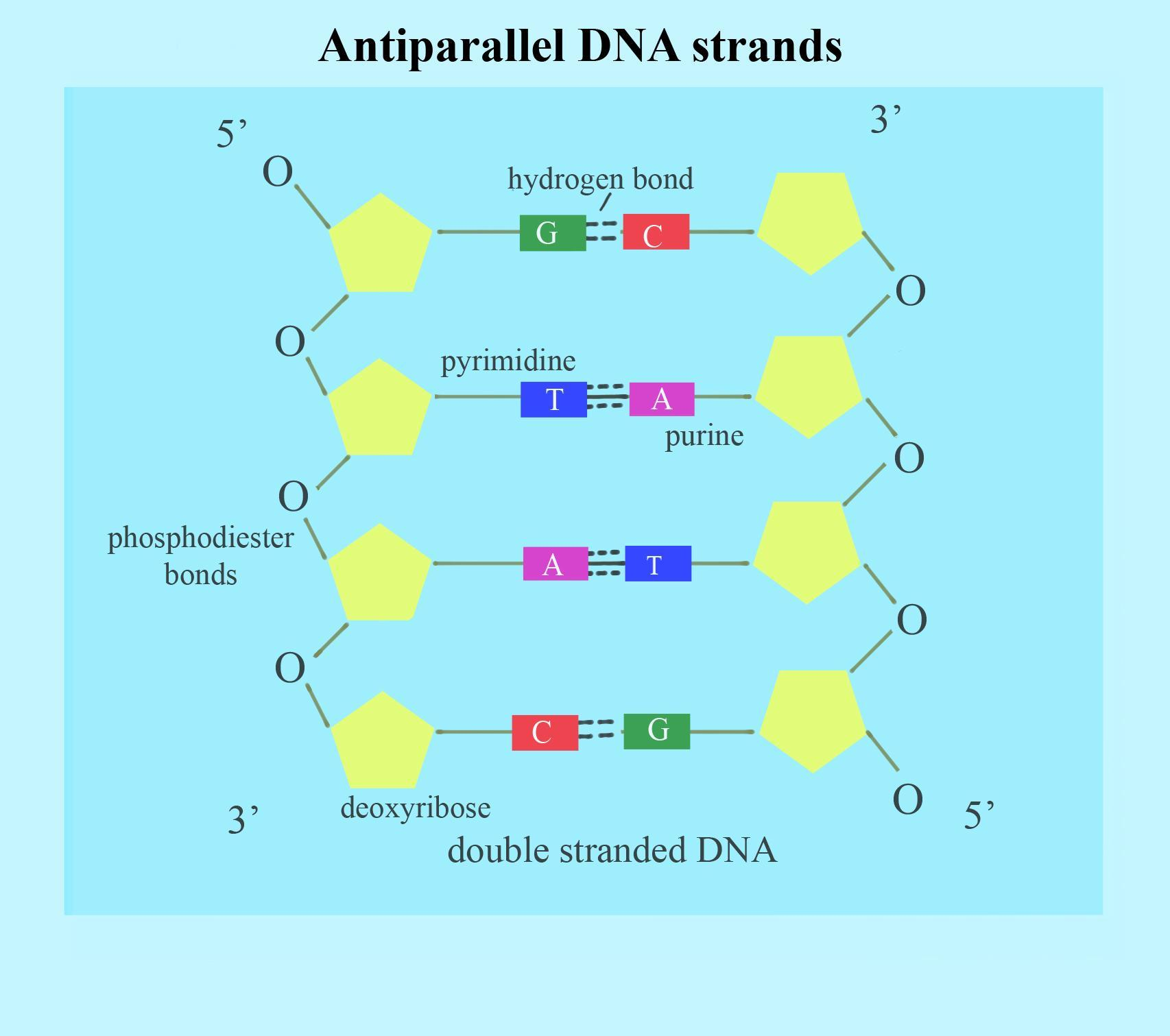
The two strands of DNA molecules are antiparallel. What do you understand by antiparallel?
Answer
486.3k+ views
Hint: DNA molecules have two strands and these two strands usually run side by side but in the opposite direction. For example, when we arrange a palindrome next to each other it looks antiparallel. Example: Madam and madaM.
Complete step by step answer:
The two DNA strands run parallel to each other but in opposite directions. One strand's 5' end faces the other strand's 3' end. The path in one chain is 5 'to 3', whereas it is 3' to 5' in the opposite one.
A DNA molecule's antiparallel strands mean that at the beginning of two DNA strands, the phosphate groups are in opposite positions (pole). DNA (Deoxyribonucleic Acid) consists of two chains of polynucleotides (nucleotide polymers), forming what looks like a ladder.

With nitrogenous bases projecting inwards, the two polynucleotide strands run 'antiparallel' to each other. The word 'antiparallel' suggests that, parallel to each other, the strands travel in opposite directions. In a complete DNA structure, the antiparallel strands curl, creating a double helix. It has a linkage of 3' to 5' and 5' to 3'. The 5' and 3' signify "five prime" and "three prime," which show the sugar backbone of the DNA's carbon numbers. A phosphate group is bound to the 5' carbon and the 3' carbon is a hydroxyl (OH) group. This asymmetry gives a "path" to a DNA strand.
Note: The antiparallel orientation enables one another to be complemented by the base pairs. Antiparallel DNA is also more stable than parallel DNA in terms of structure. DNA's antiparallel orientation has major consequences for DNA replication, as one strand allows steady replication at the replication fork, known as the leading strand, while the other becomes the lagging strand.
Complete step by step answer:
The two DNA strands run parallel to each other but in opposite directions. One strand's 5' end faces the other strand's 3' end. The path in one chain is 5 'to 3', whereas it is 3' to 5' in the opposite one.
A DNA molecule's antiparallel strands mean that at the beginning of two DNA strands, the phosphate groups are in opposite positions (pole). DNA (Deoxyribonucleic Acid) consists of two chains of polynucleotides (nucleotide polymers), forming what looks like a ladder.

With nitrogenous bases projecting inwards, the two polynucleotide strands run 'antiparallel' to each other. The word 'antiparallel' suggests that, parallel to each other, the strands travel in opposite directions. In a complete DNA structure, the antiparallel strands curl, creating a double helix. It has a linkage of 3' to 5' and 5' to 3'. The 5' and 3' signify "five prime" and "three prime," which show the sugar backbone of the DNA's carbon numbers. A phosphate group is bound to the 5' carbon and the 3' carbon is a hydroxyl (OH) group. This asymmetry gives a "path" to a DNA strand.
Note: The antiparallel orientation enables one another to be complemented by the base pairs. Antiparallel DNA is also more stable than parallel DNA in terms of structure. DNA's antiparallel orientation has major consequences for DNA replication, as one strand allows steady replication at the replication fork, known as the leading strand, while the other becomes the lagging strand.
Recently Updated Pages
Express the following as a fraction and simplify a class 7 maths CBSE

The length and width of a rectangle are in ratio of class 7 maths CBSE

The ratio of the income to the expenditure of a family class 7 maths CBSE

How do you write 025 million in scientific notatio class 7 maths CBSE

How do you convert 295 meters per second to kilometers class 7 maths CBSE

Write the following in Roman numerals 25819 class 7 maths CBSE

Trending doubts
State and prove Bernoullis theorem class 11 physics CBSE

What are Quantum numbers Explain the quantum number class 11 chemistry CBSE

Write the differences between monocot plants and dicot class 11 biology CBSE

1 ton equals to A 100 kg B 1000 kg C 10 kg D 10000 class 11 physics CBSE

State the laws of reflection of light

In northern hemisphere 21st March is called as A Vernal class 11 social science CBSE




